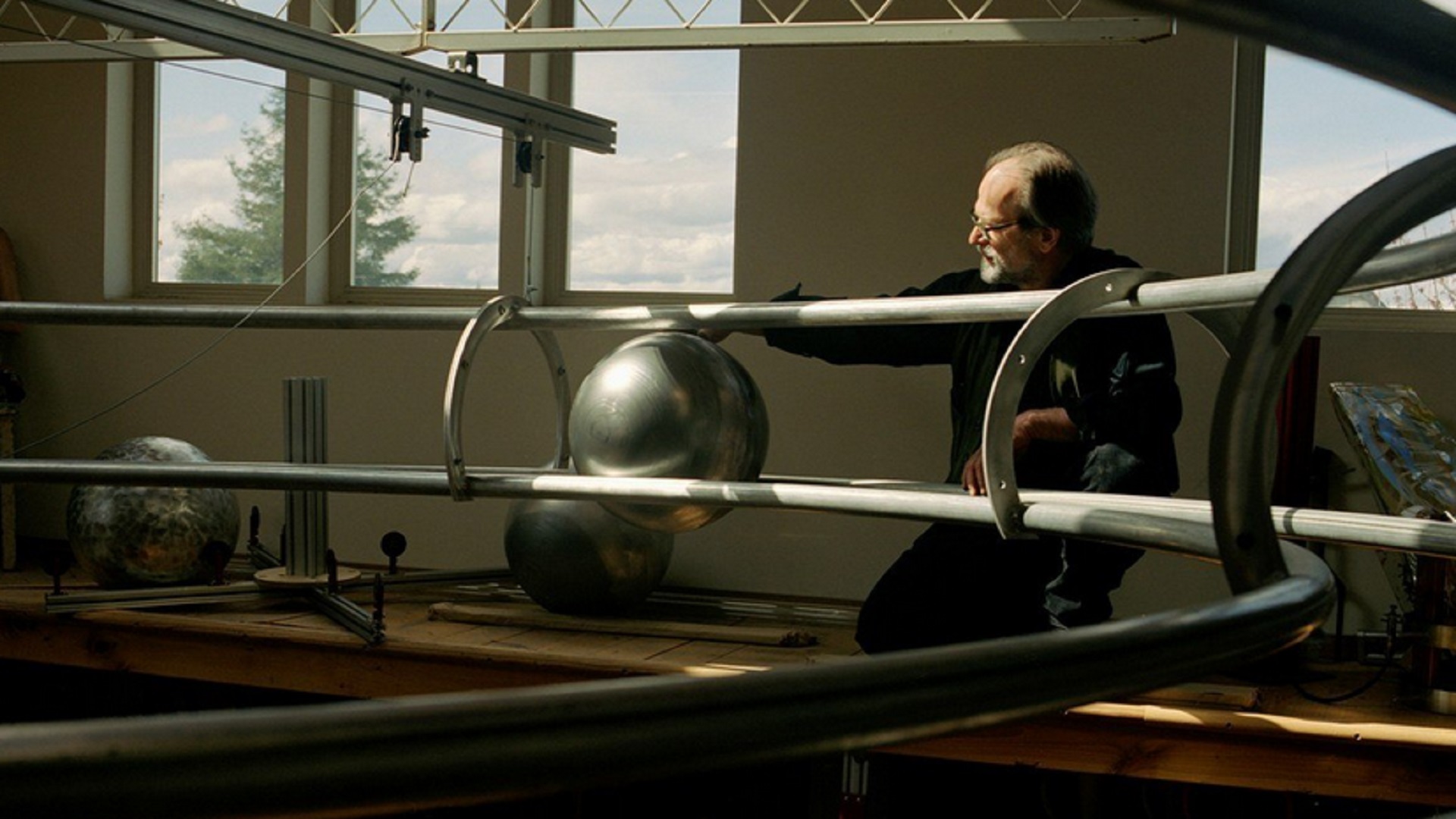By Chlotrudis Independent Film Society
Rating: 3.75 cats
Director: Peter Esmonde

Country: united_states
Year: 2009
Running time: 79
IMDB: http://www.imdb.com/title/tt1311718/
Jason says: “As much as I enjoyed South by Southwest, I must admit that I wish I had seen more of Austin. I bought a guidebook but never cracked it open, and thus my experience with the city is more or less limited to a square of about eight blocks, with the Paramount Theater at one corner, the Austin Convention Center at the other, and the Alamo Ritz in between. To give some idea of how heads-down and focused on seeing movies I was, there was a gallery showing some of Trimpin’s works right next door to the theater where I saw it, and I never found a moment to go in and take a look. I wish I had, and hope that some Boston institution (the ICA, perhaps), finds a way to do something similar when the film shows as part of the IFFB next month. I hope so; I’d like a second chance.
“Trimpin’s works, you see, are equal parts music, sculpture, and engineering. He builds sometimes-gigantic works that make sounds, often incorporating found objects into the work. Though born in Germany’s Black Forest (which several people in the film point out is the land of the cuckoo clock, a wonderfully intricate mechanical noisemaker) he states that he moved to the United States for the quality of junk to be found here. Family members describe him as a lazy student, although gifted mechanically from a young age and displaying an uncanny ear.
“I could go on like this for a while, repeating little gems about Trimpin (he opts to use only his last name, though his sister refers to him as Gerhard) that I scribbled in my notebook because I found them kind of delightful. One could be led to believe from subtitle on the poster (‘featuring the Kronos Quintet’) that the film is about one specific collaboration, and indeed director Peter Esmonde makes motions in the direction of structuring it that way – there’s a scene in the beginning where they meet, one in the middle where they experiment, and a performance toward the end – but mostly it’s a collection of facts and demonstrations of his various projects and installations.
And that’s cool. We get to see a project he built in Seattle, for instance, where one of the museum directors jokes about how aside from the music, it was a structural challenge, since they needed “to make sure [60 tons of] guitars don’t fall and kill little children” (said with a laugh). We see Trimpin hold his head near a suspended track on which a bearing larger than a bowling ball rolls and mention that he can hear the imperfections on the surface of the ball. We hear a number of other interesting bits of trivia about him, such as how he hates loudspeakers and has never recorded.
“One thing that might have been interesting for the film to delve into would be contrasting his disdain for recording with his interest in digital memory. Several times in the documentary, we see him pointing out how some mechanical device he’s constructed functions as memory, and there’s also mention that he spearheaded an effort to preserve player piano rolls of Conlon Nancarow as MIDI files (Nancarow would write pieces that could not be played by a human performer). It’s a potentially fine point, but does serve to illustrate how Esmonde does not scratch very far beneath the surface of his subject.
“Of course, part of the point seems to be that what you see is what you get with Trimpin. One interviewee says that what Trimpin does is not art – that he’s just amusing himself, but that happens to be ‘a slightly viable way to live.’ That would be a bit harsh if it wasn’t said with a smile. And everyone smiles in this movie, not least Trimpin himself. It’s a fun movie full of fun art, and for some subjects, that’s enough. 3 3/4 cats
“Seen 20 March 2009 at the Austin Paramount Theater (SXSW Documentary Feature Competition)”
